
# 113-E3e - 1869 2c essay, perf. 12 with 9x9mm grill
Rare Mint 1869 Pony Express Essay
1869 2¢ Pony Express Rider Pictorial
G Grill
Quantity issued: 72,109,050
Printed by: National Bank Note Company
Method: Flat plate
Watermark: None
Perforation: 12
Color: Brown
Inaugural Run Of The Pony Express
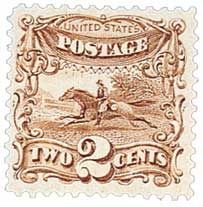
On April 3, 1860, the Pony Express made its first trip from St. Joseph, Missouri, to Sacramento, California.
In 1860, mail contractor Ben Holladay joined forces with the Russell, Majors, and Waddell freight company to create a mail-carrying operation that would be faster and more efficient than the stagecoaches of the Butterfield Overland Mail. At that time, it could take months for mail to be delivered to the unsettled West by stagecoach.
Holladay established 200 stations 25 miles apart along a 1,900-mile trail from St. Joseph, Missouri, to Sacramento, California. He then put a call out for small, brave young men that could ride a horse well. He bought 500 of the fastest horses he could find and hired 80 daring riders. The first ride left St. Joseph, Missouri on April 3, 1860, and arrived in Sacramento, California just nine days and 23 hours later. In the mochilla, or saddlebag, was a message of congratulations from President Buchanan to the Governor of California, which had been telegraphed from Washington to St. Joseph.
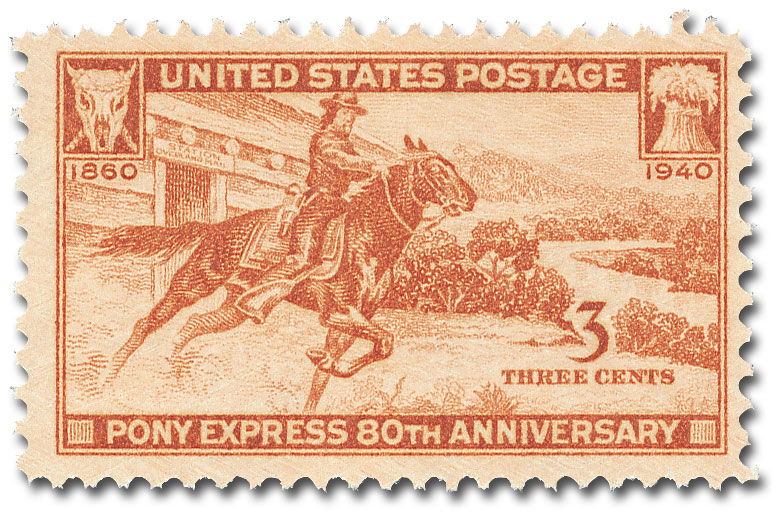
The rides were dangerous, but the pay was good – $25 a week, or the equivalent of over $4,600 in wages today. These were the Pony Express riders. The men, usually younger than 18 years old, were expected to cover 75 miles a day in spite of inclement weather and Indian attacks. Picking up a rested horse at each stop, they rode non-stop, day and night, rain or shine.
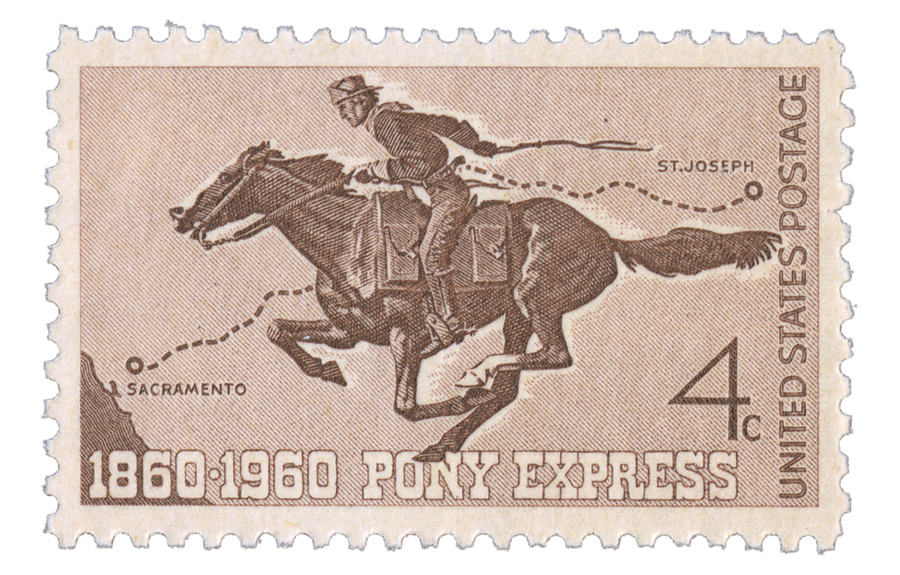
Buffalo Bill Cody, who became famous for his Wild West Show, claimed he rode for the Pony Express when he was just 15 years old. His route was through Wyoming and he told of one time when he rode 322 miles round trip because his relief rider had been killed in a brawl.
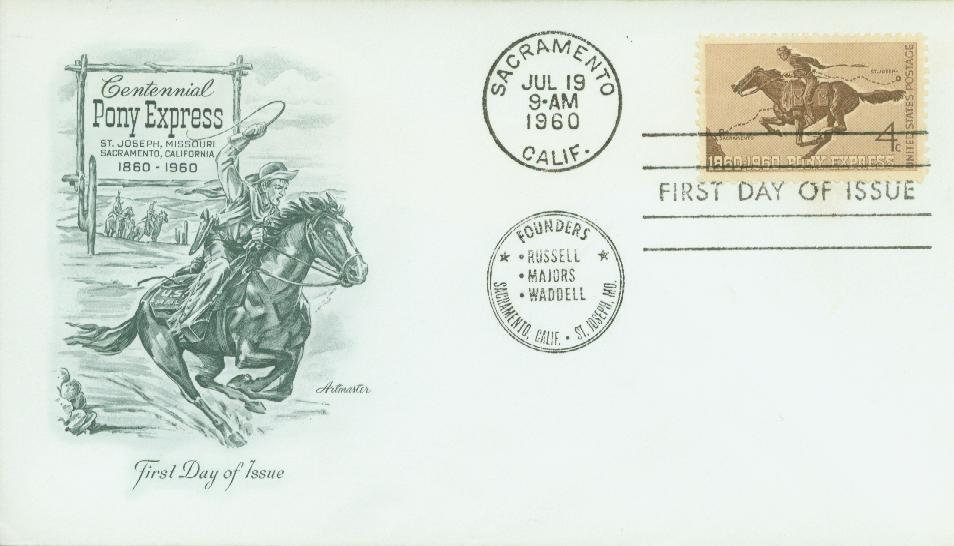
Their route could be completed in eight days, which was 12 to 14 days faster than the Overland Mail. The fastest trip was seven days when riders delivered the news of Abraham Lincoln’s presidential election in November of that year. With extra riders and horses in place, the news traveled from Fort Kearny, Nebraska, where the eastern telegraph line ended, to the start of the western line at Fort Churchill, Nevada Territory. Newspapers in California were able to report Lincoln’s victory in an unprecedented eight days after the election.
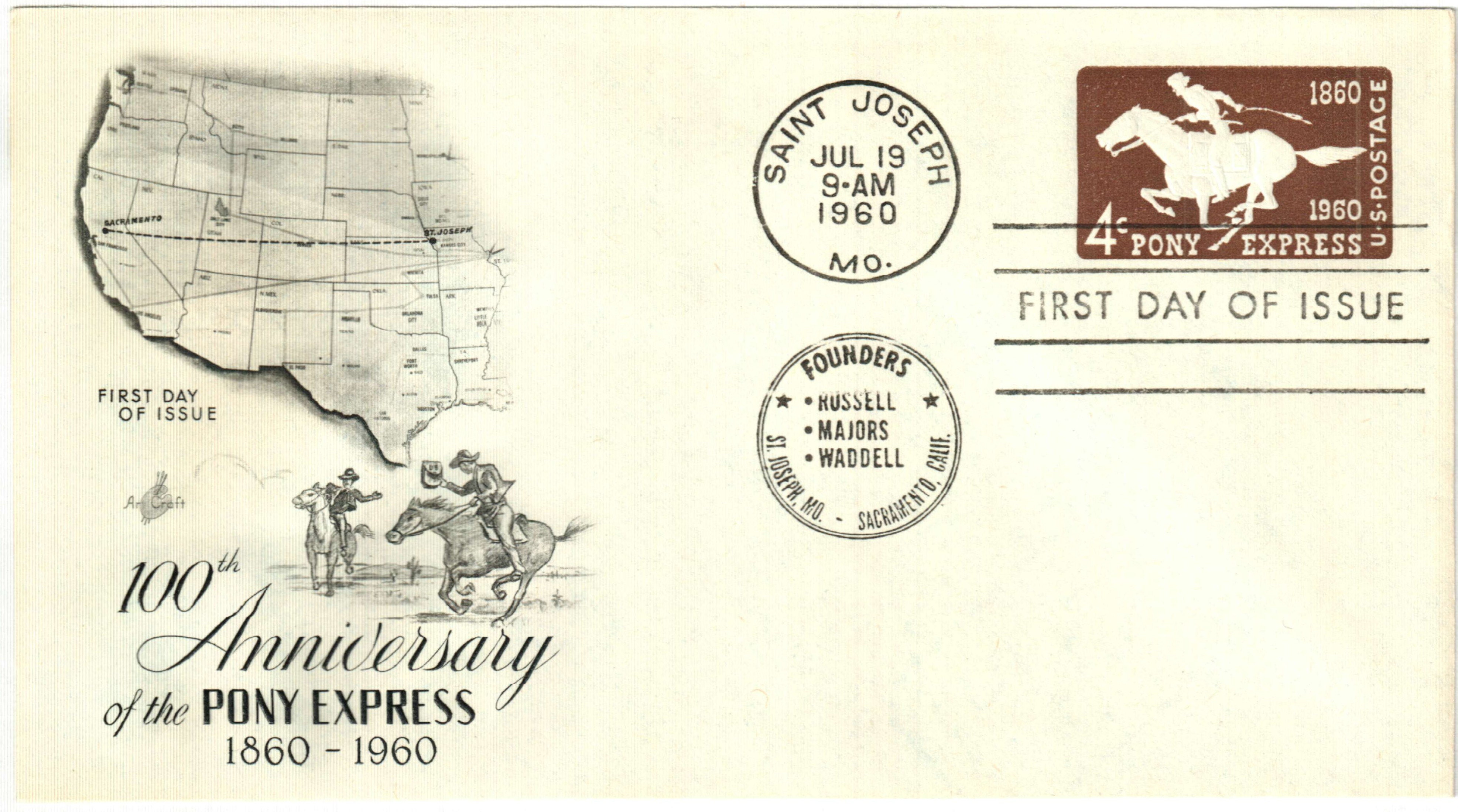
Initially, it cost $5 to send a letter between San Francisco and St. Joseph, Missouri, but that charge was later reduced to $1. An estimated 35,000 letters were carried by the Pony Express.
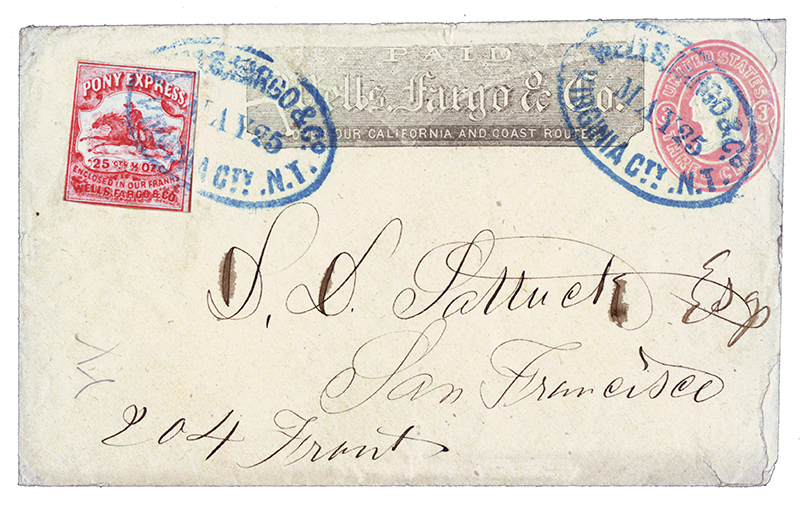
This adventurous service came to an end just 18 months after that first ride. On October 24, 1861, the Western Union Telegraph Company completed the first transcontinental telegraph line in Salt Lake City. This accomplishment ushered in a new age of communications in the US It also marked the end of the Pony Express two days later, on October 26. In spite of its fame, the Pony Express was a financial failure.
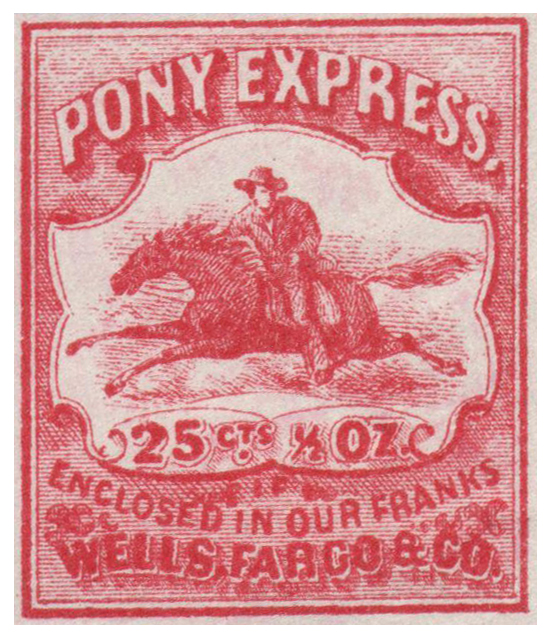
Then in 1862, Wells, Fargo & Company established its own Pony Express, dubbed the “Virginia City Pony.” This service traveled between mining towns in Nevada and the California business centers of Sacramento and San Francisco. While the original Pony Express delivered news, the Virginia City Pony was more concerned with business matters. Improvements in the roads allowed for faster transportation and the Virginia City Pony was discontinued in 1865.
Click here for more Pony Express stamps.
There are lots of interesting sites dedicated to the Pony Express where you can continue reading:
The National Pony Express Association
The Pony Express National Historic Trail
The Pony Express Museum in St. Joseph, Missouri
Rare Mint 1869 Pony Express Essay
1869 2¢ Pony Express Rider Pictorial
G Grill
Quantity issued: 72,109,050
Printed by: National Bank Note Company
Method: Flat plate
Watermark: None
Perforation: 12
Color: Brown
Inaugural Run Of The Pony Express

On April 3, 1860, the Pony Express made its first trip from St. Joseph, Missouri, to Sacramento, California.
In 1860, mail contractor Ben Holladay joined forces with the Russell, Majors, and Waddell freight company to create a mail-carrying operation that would be faster and more efficient than the stagecoaches of the Butterfield Overland Mail. At that time, it could take months for mail to be delivered to the unsettled West by stagecoach.
Holladay established 200 stations 25 miles apart along a 1,900-mile trail from St. Joseph, Missouri, to Sacramento, California. He then put a call out for small, brave young men that could ride a horse well. He bought 500 of the fastest horses he could find and hired 80 daring riders. The first ride left St. Joseph, Missouri on April 3, 1860, and arrived in Sacramento, California just nine days and 23 hours later. In the mochilla, or saddlebag, was a message of congratulations from President Buchanan to the Governor of California, which had been telegraphed from Washington to St. Joseph.

The rides were dangerous, but the pay was good – $25 a week, or the equivalent of over $4,600 in wages today. These were the Pony Express riders. The men, usually younger than 18 years old, were expected to cover 75 miles a day in spite of inclement weather and Indian attacks. Picking up a rested horse at each stop, they rode non-stop, day and night, rain or shine.

Buffalo Bill Cody, who became famous for his Wild West Show, claimed he rode for the Pony Express when he was just 15 years old. His route was through Wyoming and he told of one time when he rode 322 miles round trip because his relief rider had been killed in a brawl.

Their route could be completed in eight days, which was 12 to 14 days faster than the Overland Mail. The fastest trip was seven days when riders delivered the news of Abraham Lincoln’s presidential election in November of that year. With extra riders and horses in place, the news traveled from Fort Kearny, Nebraska, where the eastern telegraph line ended, to the start of the western line at Fort Churchill, Nevada Territory. Newspapers in California were able to report Lincoln’s victory in an unprecedented eight days after the election.

Initially, it cost $5 to send a letter between San Francisco and St. Joseph, Missouri, but that charge was later reduced to $1. An estimated 35,000 letters were carried by the Pony Express.

This adventurous service came to an end just 18 months after that first ride. On October 24, 1861, the Western Union Telegraph Company completed the first transcontinental telegraph line in Salt Lake City. This accomplishment ushered in a new age of communications in the US It also marked the end of the Pony Express two days later, on October 26. In spite of its fame, the Pony Express was a financial failure.

Then in 1862, Wells, Fargo & Company established its own Pony Express, dubbed the “Virginia City Pony.” This service traveled between mining towns in Nevada and the California business centers of Sacramento and San Francisco. While the original Pony Express delivered news, the Virginia City Pony was more concerned with business matters. Improvements in the roads allowed for faster transportation and the Virginia City Pony was discontinued in 1865.
Click here for more Pony Express stamps.
There are lots of interesting sites dedicated to the Pony Express where you can continue reading:
The National Pony Express Association
The Pony Express National Historic Trail
The Pony Express Museum in St. Joseph, Missouri








